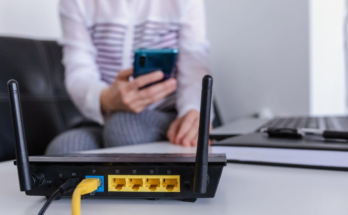
When the pandemic hit last year, the first thing many parents did was abandon any rules they had in place about screen time. It’s not because the pandemic made us lazy parents; it’s because so many of us suddenly needed to work in the same spaces where our children were learning, playing, and arguing with each other.
Their sports, clubs, and after-school activities were canceled and we weren’t yet sure how the virus even spread, let alone how to get our kids together safely with friends for socially distanced, outdoor playdates. So for many of our kids, tablets and smartphones became their lifeline to their friends—one of the few ways they could connect to the outside world that the pandemic hadn’t taken away. We let them log on, and before we knew it, extra screen time became way too much screen time, and bad habits were formed.
I have known for some time that my own 10-year-old’s screen time was out of control, and I decided that summer break, with its pleasant weather and camp opportunities, was the ideal time to transition to a more limited screen time lifestyle. But I wasn’t sure exactly how to handle it without making it seem punitive, so I reached out to child psychiatrist Dr. Helen Egger for advice on where to start and how to build new, healthier screen time habits.
First, forgive yourself
Most of that introduction is me attempting to justify my own parenting over the past 15 months. I believe every word of it, and yet, we know excessive screen time isn’t good for our kids. But the first thing Egger, co-founder and chief medical officer of Little Otter, a mental health service for children, told me is that parents need to forgive themselves.
“The first thing is really to give yourself a break, and every parent should do that, truly,” Egger says. “This has been such a difficult time with so many losses … and I think we need to recognize that this pandemic has been an emergency and a trauma for everyone.”
So, hey, we got through a pandemic, and maybe our kids are on their screens too much now, but this is a thing we can fix—and they will be fine.
G/O Media may get a commission
Dopamine is making them want more
What makes a child’s reliance on screens so prevalent is the physiological response they are experiencing while using them. Sure, there’s the fact that device use naturally becomes a habit over time—think of how you reach for your cell phone the second after you turn off the alarm clock in the morning. But it’s more than that.
Video games and apps “are built to keep us on their platform,” Egger says. “They stimulate a part of our brain that produces dopamine, which is the reward system; they call dopamine the ‘feel-good neurotransmitter.’ So what’s important to realize is that it’s a kind of habit that can be difficult to break the cycle, because it’s not just in a social way providing something that’s positive, it’s that the screen time and the games are making your brain want more.”
That’s not inherently bad—but when it becomes hard to control or interferes with other activities they once enjoyed, such as sports, independent play time, arts and crafts, or family time, it’s time to get a handle on it.
Assess their actual screen time use—and your own
You may have a sense that your kid’s screen time has increased over the course of the pandemic, but if they’re old enough to access those devices without your help, you may not have a full picture of how and when they’re diving in. Start to take notice of when they’re logging on, particularly if there are times when it’s more problematic than others.
While you’re at it, Egger says it’s a good idea to take stock of your own screen usage, which has probably also increased over the past year. You can talk about reducing screen time all you want, but if you’re also checking work emails at the dinner table, you’re sending a conflicting message. Chances are good that we can all find some ways to reduce the amount of time in a day that our eyes are glued to a screen.
If you’re not sure where to start, the American Academy of Pediatrics (AAP) has a media use calculator that you can use to input all the ways they (and any member of the family) spend the hours in a day, from sleeping and meal times, to chores, physical activities, family time and, yes, screen time. You can fill this out with them to help them get a visual of how disproportionate their screen use might be versus other activities.
Once you’ve got a better handle on the family’s screen use, you can use that information to look for areas where you can work to create new habits. For example, maybe they used to wake up and immediately turn on their iPad or grab their video game controller because they didn’t yet need to join their teacher’s Zoom call—but now they’ve got a summer camp to get ready for in the morning, which is something they’re looking forward to and can be a natural time to transition away from automatically jumping on the screen.
Create a family media plan
Now that you’ve forgiven yourself for all your screen sins, recognized the role that dopamine plays, and gotten your hands around how big of a presence those screens are in your life, it’s time for everyone to discuss where to go from here. Assuming they’re old enough to understand, that might start by acknowledging to them how we got here in the first place.
Kids who are old enough to access those devices on their own are also old enough to understand that we just went through one hell of a year, and that life had to adjust accordingly for a while—but now we’re in a situation where things are opening back up and it’s important to be doing those other physical and social activities that are important for them to experience. They may have their own thoughts about what kinds of activities they want to prioritize this summer, and you can talk through how to make those things happen.
To that end, you can create a family media plan together. The AAP has a tool for that, too, which we’ve written about in the past. That can help you decide together, as a family, how you’ll designate screen-free times and zones in the home, how you’ll balance online and offline time, and the media “manners” you’ll each commit to.
In other words, don’t simply drop the hammer and decree that they’ll only be allowed one hour of screen time per day after 15 straight months of much more than that. This isn’t a punishment; it’s a reorganizing of priorities because we can finally reorganize them.
“It’s not about losing something, like losing time on the screen,” Egger says. “It’s really important to frame it around what can we get back that we love, and to try to [talk about that] in positive terms.”
Egger also points out that all screen time doesn’t need to look like every member of the family retreating to their separate corners in solitude; you can also use it to build connection as a family, either by asking them to show you how they play a favorite game or by watching a TV show together that you all enjoy.



